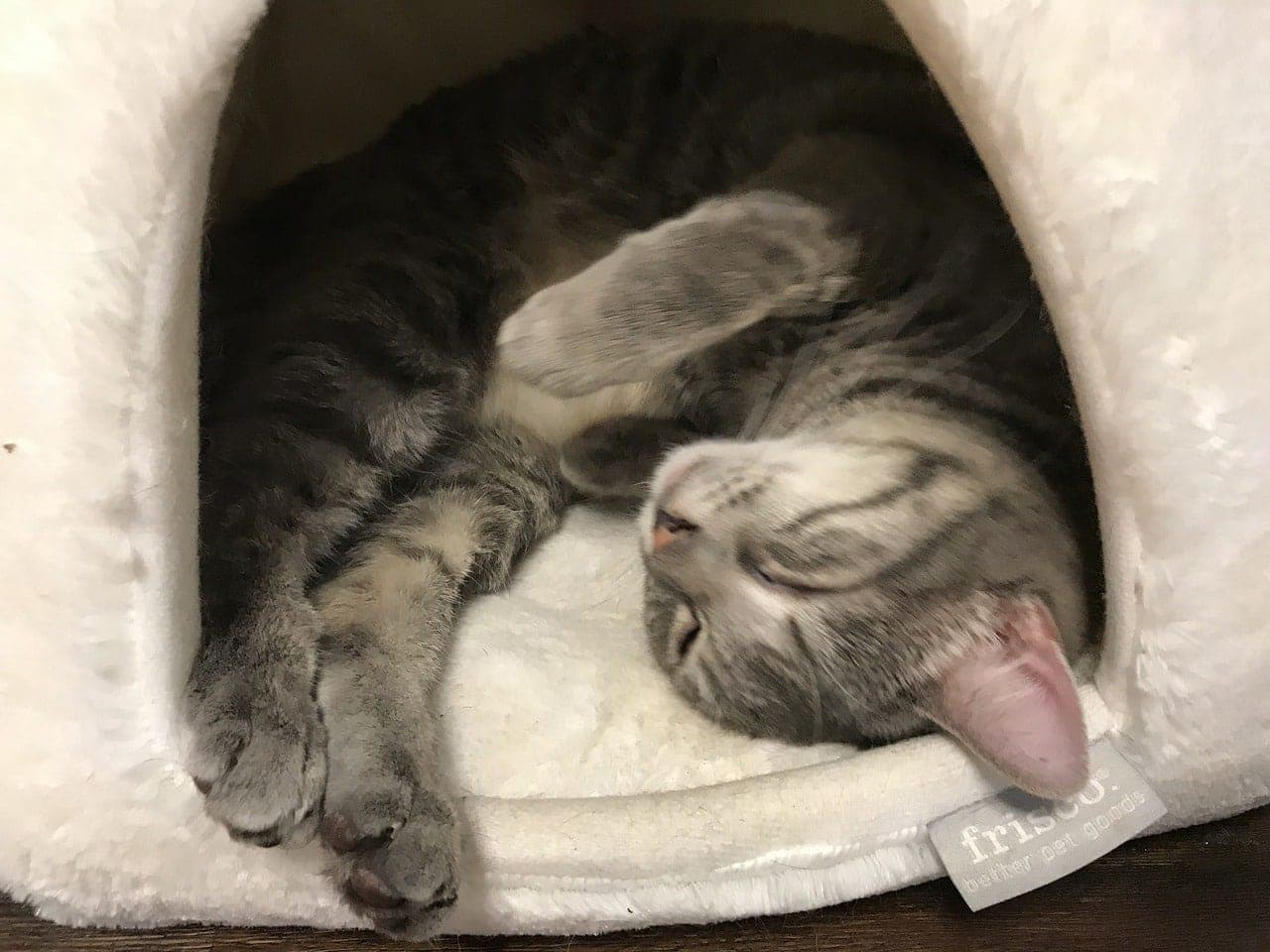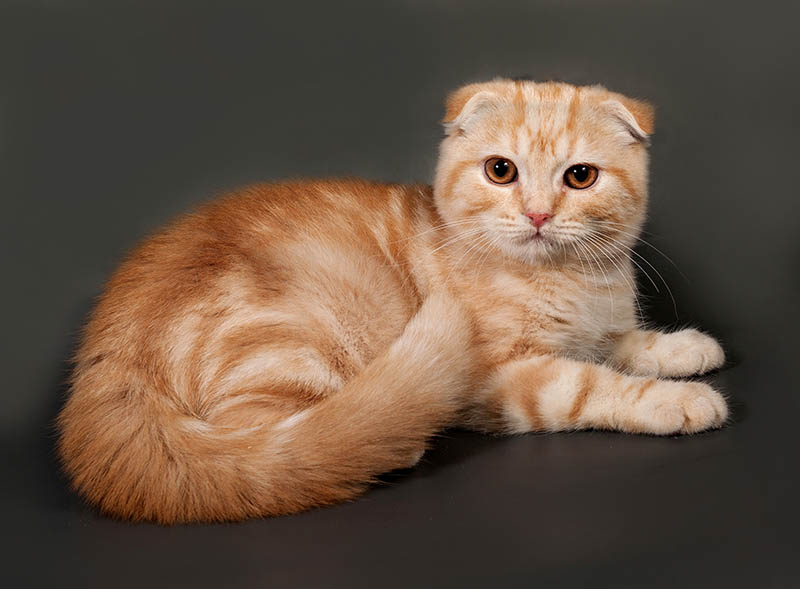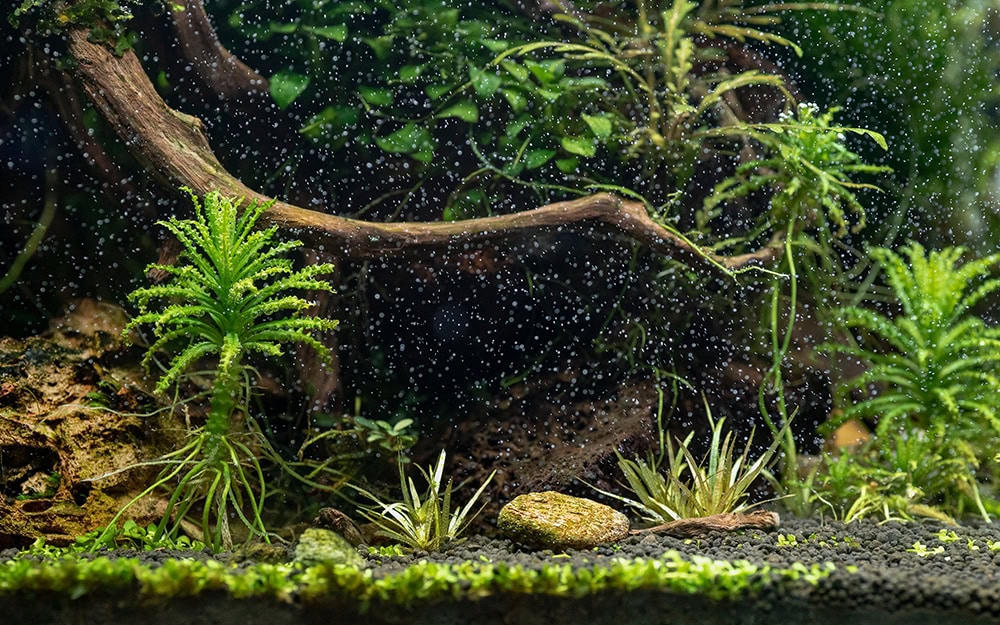How to Clean Cat Paws – 7 Simple Steps
By Luxifa Le
Updated on
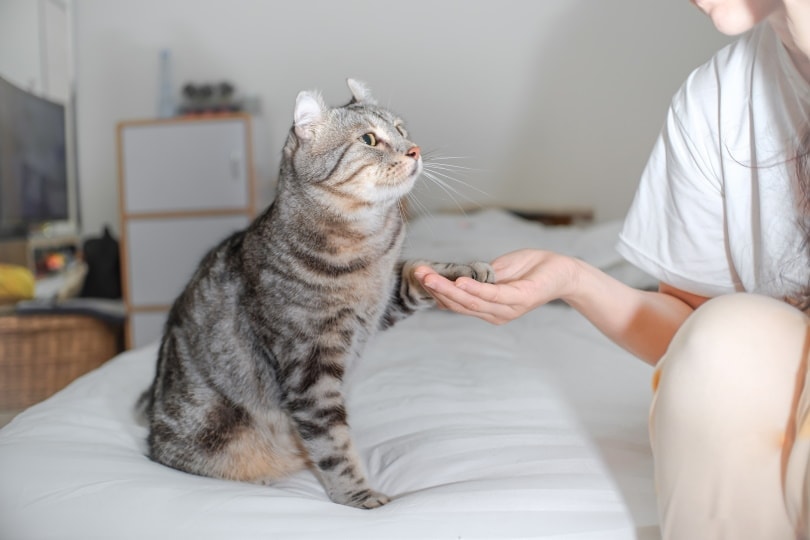
Cats are excellent self-groomers and usually take care of their cleaning and hygiene needs quite well. That does not mean you won’t come across a situation where you will have to provide them with some grooming assistance, though.
If your cat has sustained an injury to the paw, has trapped debris or waste stuck in their footpads, or has gotten into an unknown substance, you want to know how to clean their paws safely and effectively. Let’s get into it!
What You’ll Need
- Cat shampoo
- Warm water
- Appropriately sized bowl or tub
- Washcloth(s)
- Towel
The 7 Steps for Cleaning Your Cat’s Paws
1. Use Caution
Some cats take well to being groomed, while others will put up quite a fight to avoid being restrained. It’s important to know your cat to make an educated determination on how they will react. If you have a feisty cat, try wrapping them in a towel or blanket to help safely restrain them during the process. Ask for help from a friend or family member as needed.
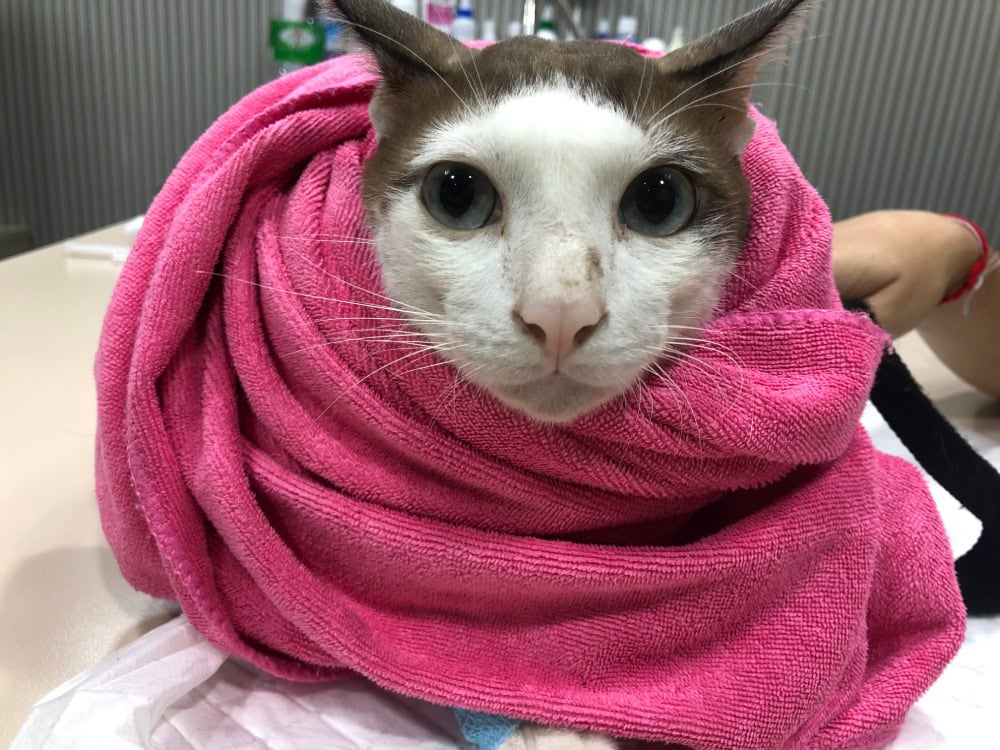
2. Go to a Quiet Area
This can be a very stressful situation for your cat, so do what you can to ensure the environment and the surrounding energy is calm and peaceful. You do not want a lot of noise or outside influences causing a disruption or increasing their discomfort.
3. Examine the Paws
Before the cleaning process begins, do a thorough examination of each paw so that you have an idea of what you are dealing with. Keep an eye out for any signs of injury, infection, or inflammation. If there is debris, waste, or any type of substance stuck to the fur surrounding the paw, you will want to take a mental note so that you can clean it thoroughly.
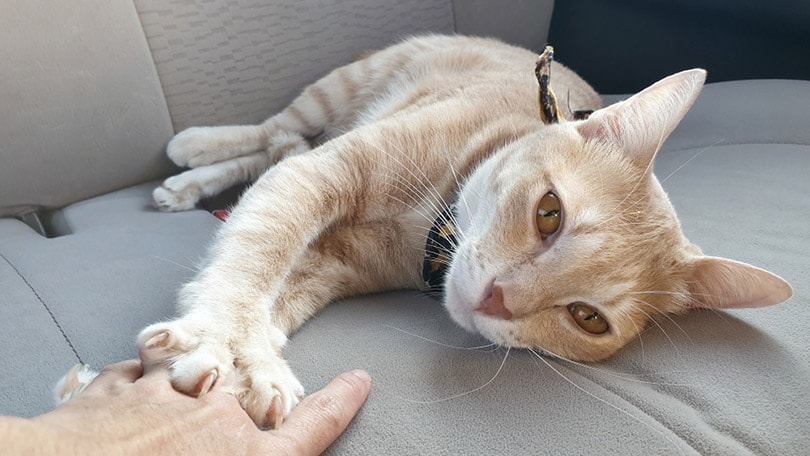
4. Rinse
Start by rinsing the feet with warm (not hot) water. It’s likely your cat will not take well to running water, it’s best to have a bowl or tub of clean water for this reason. Rinsing will help remove any excess dirt and debris. Dip your cats’ paws in one at a time then wipe each one down with a cloth to eliminate all the excess dirt and debris. If your cat cannot tolerate having its feet dipped, try wiping each paw with a damp cloth.
5. Shampoo
Next, you can apply a small amount of cat shampoo onto the paws and massage it gently. Make sure you are using a shampoo that is designed for cats and that you dilute it according to the manufacturer’s instructions. Get the shampoo massaged between their toes by gently spreading each one apart. These harder-to-reach areas tend to collect much more debris than the outside of the paw. Also, massage the footpads thoroughly to clean the bottoms of their tiny feet.
Do not apply shampoo to injured or inflamed paws, consult your veterinarian for instructions on how to properly handle this type of scenario, as shampoo can severely irritate wounds or delicate areas of the skin. Use the guidance of your veterinarian to determine what products, if any should be used in this situation.
There are a lot of pet shampoos on the market, but not all of them will keep your pet's skin and coat happy and healthy. The Hepper Pet Shampoo products are pH balanced and made with natural, safe ingredients like soothing oatmeal and aloe vera. Our shampoos will keep your pet clean, smelling fresh, and fully moisturized! The hardest part is deciding whether to get to traditional shampoo or the rinse-free version! Here’s a quick guide to help you choose the right option for your pet’s next bath!
Hepper Colloidal Oatmeal Pet Shampoo
Hepper Waterless No Rinse Pet Shampoo
Natural cucumber & aloe scent
Safe for cats & dogs
Rinsing required
Free of harsh chemicals & nasty ingredients
Lathers easily
6. Rinse Again
Now to get the shampoo rinsed away. You can dip each paw individually into the bowl or tub of clean water and thoroughly rinse each paw so that no shampoo suds are left behind. You do not want your kitty licking up any leftover shampoo once the cleaning is over. You may have to repeat this process several times to ensure each paw is well-rinsed. If your cat does not take well to dipping, try using a very damp cloth and ring it out after each rinse.
7. Dry
After you have thoroughly cleaned and rinsed each paw, you will need to take out a dry towel and dry them individually. Make sure to spread their little toes apart to dry between them. Get them as dry as you comfortably can and then allow your cat to shake them out themselves.
What If My Cats Paws Show Signs of Injury or Inflammation?
If your cat’s paws are displaying signs of redness, inflammation, or any type of injury, consult with your veterinarian. Injured or irritated paws will need to be cared for differently depending on the circumstances. You will likely need a health examination to get to the root of the problem and come up with the proper treatment plan.
Common Reasons for Inflammation of Paws
- Trauma
- Irritants
- Allergies
- Bacterial or fungal infections
- Excessive grooming
- Underlying health conditions
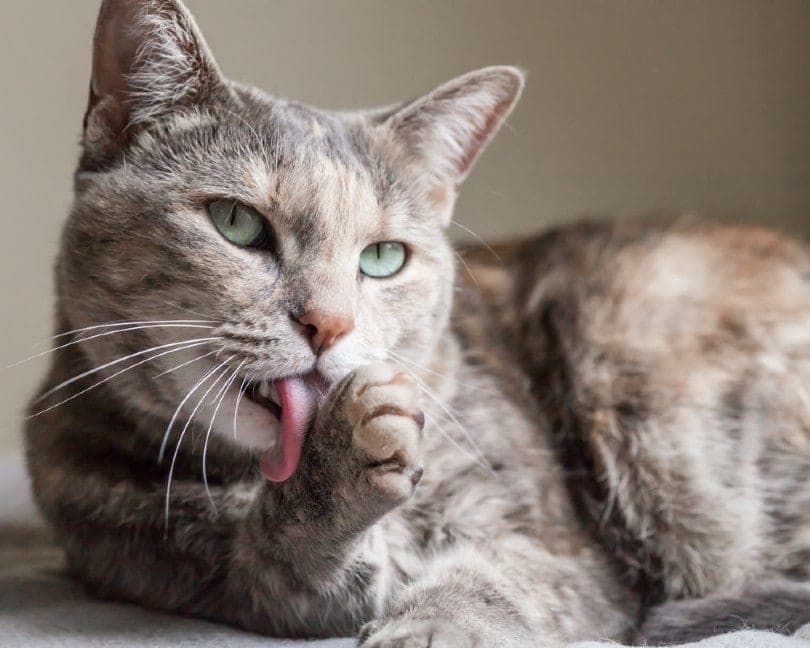
What to Avoid
Since cats are very dedicated self-groomers, you will want to avoid certain ingredients that are in some commercial shampoos and grooming products. Some of the chemicals and other ingredients used can pose potential risks if ingested by licking the recently washed area. Remember, only use grooming products that are designed specifically for cats, and do your best to avoid any products that contain the following:
- Artificial dyes
- Parabens
- Sulfates
- Petrochemicals
- Pyrethroids
- Phenol
- Artificial fragrances
- Formaldehyde
- Mineral oil
- Propylene glycol
- Methylchloroisothiazolinone
- Pennyroyal
- Certain essential oils
How to Maintain Healthy Paws
Your cat’s feet should always be kept clean and overall, they will do a great job of this on their own but there are some things you can do to help them maintain healthy, clean paws.
- Examine Their Feet: You can keep up with your cat’s paw health by regularly checking their paws for any dirt, debris, or signs of injury or inflammation. Frequent, quick checks will help you stay ahead of any issues that could present with worsened symptoms if left untreated.
- Provide Occasional Wipe Downs: You can assist by getting some cat wipes and providing an occasional wipe down of the paws as needed. If you wish, you can wipe down each paw thoroughly when you do your routine examination. Make sure to wipe between those toes!
- Keep Your Surfaces Clean: Keeping your floors and other household surfaces clean and free of debris and/or household chemicals will help maintain healthy paws. Cats tend to wander all over the house, including onto the countertops. Make sure the carpets, furniture, and hard floor surfaces are well-vacuumed and cleaned regularly, and keep surfaces wiped down.
- Consult Your Vet if you Notice Anything Unusual: If you notice your cat has begun limping, favored a leg, or obsessively licked and cleaned its paws, or are displaying any visible signs of injury, infection, or irritation, contact your veterinarian so that you can get to the root of the problem and have them properly treated.
- Regular Grooming: If you are in any way uncomfortable with grooming your cat yourself, you can choose to set them up with a professional groomer. Regular visits to a professional groomer have plenty of benefits. The groomer you choose should be well-trained, knowledgeable, and experienced with handling even the feistiest of cats. They can help maintain healthy coats and paws and advise you of any concerns.
Conclusion
While cats are great groomers, there is no harm in keeping up with their paw health by giving them a thorough cleaning. Not all cats will take to a paw cleanse the same, so make sure you use caution when messing with their claw-ridden feet.
Some preventative measures can be taken to help maintain healthy paws. If you ever notice any unusual symptoms or behavior or see anything of concern regarding your cats’ paws, reach out to your veterinarian for further guidance and treatment.
See also:
Featured Image Credit: Nitiphonphat, Shutterstock




